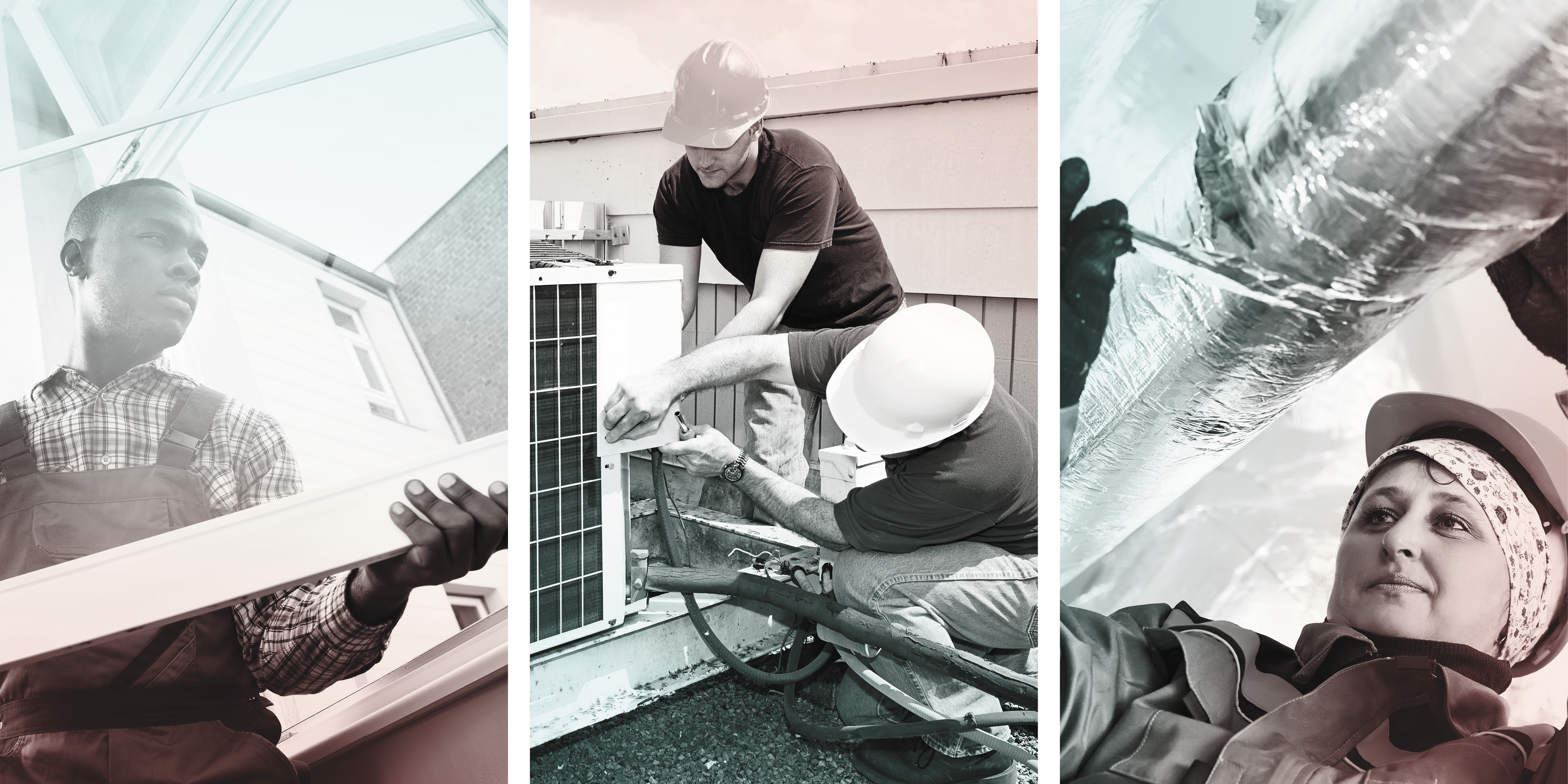
One of our most important priorities in energy is the equitably decarbonizing of our industry. Much of our recent research has explored how disadvantaged communities lag behind affluent communities in receiving benefits from distributed energy resources, efficiency programs, and other solutions that help lower household energy burden and improve public health. Often absent from the conversation is how we deliver these services and who, specifically, benefits from our industry’s growth. To explore this further, we ask:
What workforce barriers do marginalized communities face when contributing to a clean energy future?
Viewed from this lens, workforce development is not just about energy jobs, but energy agency. Here I share a few findings from a recent literature review on workforce development best practices ILLUME conducted on behalf of one of our utility customers.
After losing hundreds of thousands of jobs to the pandemic, our industry and the country are eager to get back to work. The president’s American Jobs Plan seeks to modernize jobs in power generation, build next generation industries in distressed communities, and engage union workers to upgrade homes and businesses through DER, clean transportation, and residential, commercial and municipal building retrofits. But the ambitiousness of the federal government must be met with inclusiveness.
Our research findings echo the administration’s objectives to prioritize and address, “long-standing and persistent racial injustice” and “invest in rural communities impacted by the market-based transition to clean energy”. But what other challenges lie ahead as we seek to ensure equity in workforce development?
Challenge #1: Address structural barriers that affect marginalized groups
Utilities are taking active steps to increase diversity within their ranks and diversify their supply chain, but barriers still exist. Many small businesses have limited access to financing, which can be a barrier to making payroll, and complex procurement systems and utility program requirements like requests for higher-than-normal insurance coverage, cybersecurity requirements, and background check expectations can hinder participation.
Potential Solutions:
- ComEd’s Diverse Energy Efficiency Service Provider (EESP) Incubator Program provides a range of support to contractors including training contractors on ComEd’s Energy Efficiency Portfolio offerings, back-office training and support, and assistance on certifications and project financing applications. The program’s goal is to enable diverse contractors to join the EESP Network and complete energy efficiency projects.
- Paid internships, such as those offered by program administrators and utilities such as NYSERDA and LADWP, offer hourly living wages ($16 – $17 per hour) that can create a viable pipeline into the industry.
Challenge #2: Align workforce development goals with community energy goals
Our research finds that community goals can be a jumping off point to motivate new partnerships and support. Utilities and program administrators need to look no further than community sustainability plans, local ordinances, and community climate goals for ways to align with workforce development objectives.
Potential solutions:
- The city of Milwaukee, WI identified access to jobs as a top priority in its 2013–23 sustainability plan, ReFresh Milwaukee. The plan describes how actions across eight main themes, including buildings and energy, can create jobs.
- Find intersections between diversity, climate goals, and workforce development. This recent report commissioned by the Bloomberg Philanthropies American Cities Climate Challenge outlines best practices for cities to engage with local workforce in order to meet climate goals.
Challenge #3: Leverage partnerships to maximize resources and engender trust
Partnering with community organizations provides insider perspectives that may be needed to engage a diverse workforce. Through the trust they foster and their knowledge of communities, these organizations strengthen communication, outreach, and program design models to reach and train potentially qualified employees.
Potential solutions:
- Move beyond transactive models and tap into the potential of co-creating. In an article in ILLUME’s 2021 magazine Energy Citizenship, From Community Engagement to Ownership, we interview Rosa González a leading expert in community organizing. González invites our industry to accept that communities are already assessing their challenges and dreaming up viable solutions without us. González’s model, The Spectrum of Community Engagement to Ownership, offers a path to more authentically collaborate.
- In Georgia, programs like WorkSource Georgia, the state’s federally funded employment and training system, partners with the Technical College System of Georgia’s (TCSG) Office Workforce Development to offer classes in home energy audits, building envelopes, and building analyst skills through programs like the Construction Management program at Georgia Northwestern.
Utilities, program administrators, and the federal government are dialing into solutions to ramp up a more qualified and diverse workforce. As we embark on a more inclusive road to energy equity, it is imperative that our workforce solutions draw upon frameworks that enable our industry to co-create alongside our communities.
